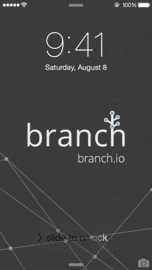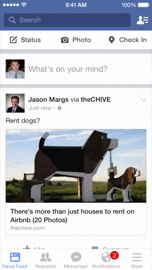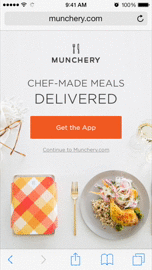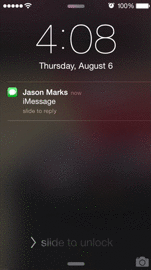Mobile deep linking is quickly becoming standard practice for successful mobile apps. To stay competitive in the mobile space, it’s critical to understand how they work and what they can do.
Branch links work across all platforms. That means a simple Branch integration will allow you to support Facebook, Google, Apple, and any other linking standards now or in the future. Our links handle all of the various use cases, so you don’t have to.
In addition to providing the most comprehensive and simplistic deep linking platform, our links capture contextual data of the user. You’ll know exactly where a user came from so you can easily personalize onboarding or attribute downloads and reopens for both paid and organic channels.
To show you some of the types of solutions Branch offers, we’ve compiled user flow GIFs of a couple of our awesome partners that use Branch mobile deep links. Let’s delve in:
Mobile Deep Linking: Deepviews
Deepviews gives users a dynamically created, automatically formatted, fully customizable, preview of in-app content before committing to a download. Behind every Deepview is a deep linked CTA that will route users to the app store and give them a personalized post-install experience. If a user already has the app, the Deepview will not be shown and the user will be taken directly to the content in the app after they click on the link.
Dojo
Dojo is a lifestyle app for London and Paris. When a link to a specific event is shared with a friend, the receiving user is taken to a Deepview where they can view relevant information about the event. After clicking the CTA, the user is deep linked through install to the original event. It may seem counter-intuitive to add an extra onboarding step, however, this extra step gives the user more confidence in your app, making users 2 to 6 times more likely to install the app.
AllTheCooks
For AllTheCooks, a recipe-sharing app, Deepview links have a click-to-install rate of 22.4%. This is compared to a click-to-install rate of 2.9% for links that route users directly to the app store, resulting in an over 7x increase in link click-to-install rates.
Deep Linking: Organic Attribution and Universal Routing
The following three examples are partners using Branch links to measure organic attribution across any channel.
theChive
theChive uses Branch links to attribute installs from sharing channels. In this case, a Branch link lives behind theChive post on Facebook. When the user clicks on the post they are redirected to the Facebook web view with a customized Smart App Banner to download the app. When a user installs the app it’s attributed to the channel the on which it was posted. theChive also receives data on click to install rates for every channel.
Magra
Magra is a mobile-first company that uses Branch to host a text-me-the-app website for them. This way, Magra can easily convert users that find them on desktop. The user is prompted to ‘text-me-the-app’ from desktop and then receives a customized SMS message with a link that directs them to the app store to download. Install rates are tracked for insight on how users are finding their app.
Munchery
Munchery uses a universal interstitial to attribute app installs from its mobile site. When a user clicks the call-to-action (CTA) they’re directed to the appropriate app store to download the app. If they already have the app installed, the user will be taken directly into the app. The Branch-powered interstitial allows Munchery to attribute actual installs, not just clicks on the CTA.
Deep Linked Marketing Campaigns
Deep linking is the basic function of linking a user to specific content within an app. However, unlike deferred deep linking, the user already has the app installed on their device. You can add deep linking functionality to anything with a link (ads, sharing channels, interstitial, emails, etc.). Our mquick links makes it increadibly easy.
Figure 1
Figure 1, an image sharing app for healthcare professionals, uses deep links in their re-engagement emails. A user opens the email to see a current medical case and a multiple choice question asking their diagnosis. When users select any of the multiple choice answers they are deep linked to the same medical case within the native app.
Redfin
Redfin, a popular real estate service, lets users deep link from a listing they found on mobile web to the listing in their native app. In this scenario, a user clicks a Redfin posting while browsing mobile web for home listings. From there, the user clicks the smart app banner, part of Journeys, and is deep linked to the native app where they see the same listing from mobile web.
Deferred Deep Linking
Deferred deep linking takes basic deep linking to the next level. With deferred deep linking, you can route a user to specific content in the app regardless of whether the app is installed or not.
Close5
Instead of greeting the user with a generic welcome page, Close5 uses deferred deep linking to greet the customer with the same listing they were viewing on mobile web when they download the app. Close5 utilizes the customizable smart app banner with deep linking to do this. When a user is viewing an item on mobile web and clicks the smart app banner, they’re brought directly to the same item in the native app after install. This vastly improves the user’s browsing experience and increases mobile web-to-app conversions.
Hotel Tonight
Hotel Tonight helps users find last-minute hotel deals. They’ve used deferred deep linking to create a two-sided referral program. When a user shares a promotion link to a friend, and the receiving user clicks the link, he/she is deferred deep linked through the install and is greeted with a personalized welcome. Both users are accredited for the referral upon first opening the app.
Hotel Tonight also uses deep linked ads to create a fast and seamless user experience. Clicking on the ad directs users to the app store to download, however, upon first open the user is greeted with listings in the city which he/she searched. With this deep linked search ad, Hotel Tonight sees an 18% increase in their install to booking rate.
Whatsgoodly
Whatsgoodly, a social polling application, has implemented deferred deep linking to improve UX and onboarding. If someone without the app clicks the link, they will be directed to the app store. Upon first open the new user is routed directly to the poll that was originally shared with him/her. If someone with the app clicks the links, they will be routed directly to the appropriate poll in the app without first going to the app store. This process of determining where to route users based on previous app install is called contextual deep linking.
Cole Haan
Similarly to Whatsgoodly, Cole Haan uses deferred deep linking in their e-commerce app.
Charlotte Russe
In another example, Charlotte Russe sends emails featuring sales and promotions with Branch links. Users who click on the ‘shoes’ button in the email are welcomed with the shoes tab when they open the app for the first time. This is a great way to convert existing web customers to active mobile users.
We hope that these examples help you discover a new way to use deep links to grow your app. There are endless ways to use the power of Branch links and we love discovering new use cases from our partners every day. We look forward to seeing what you build with Branch links.


































